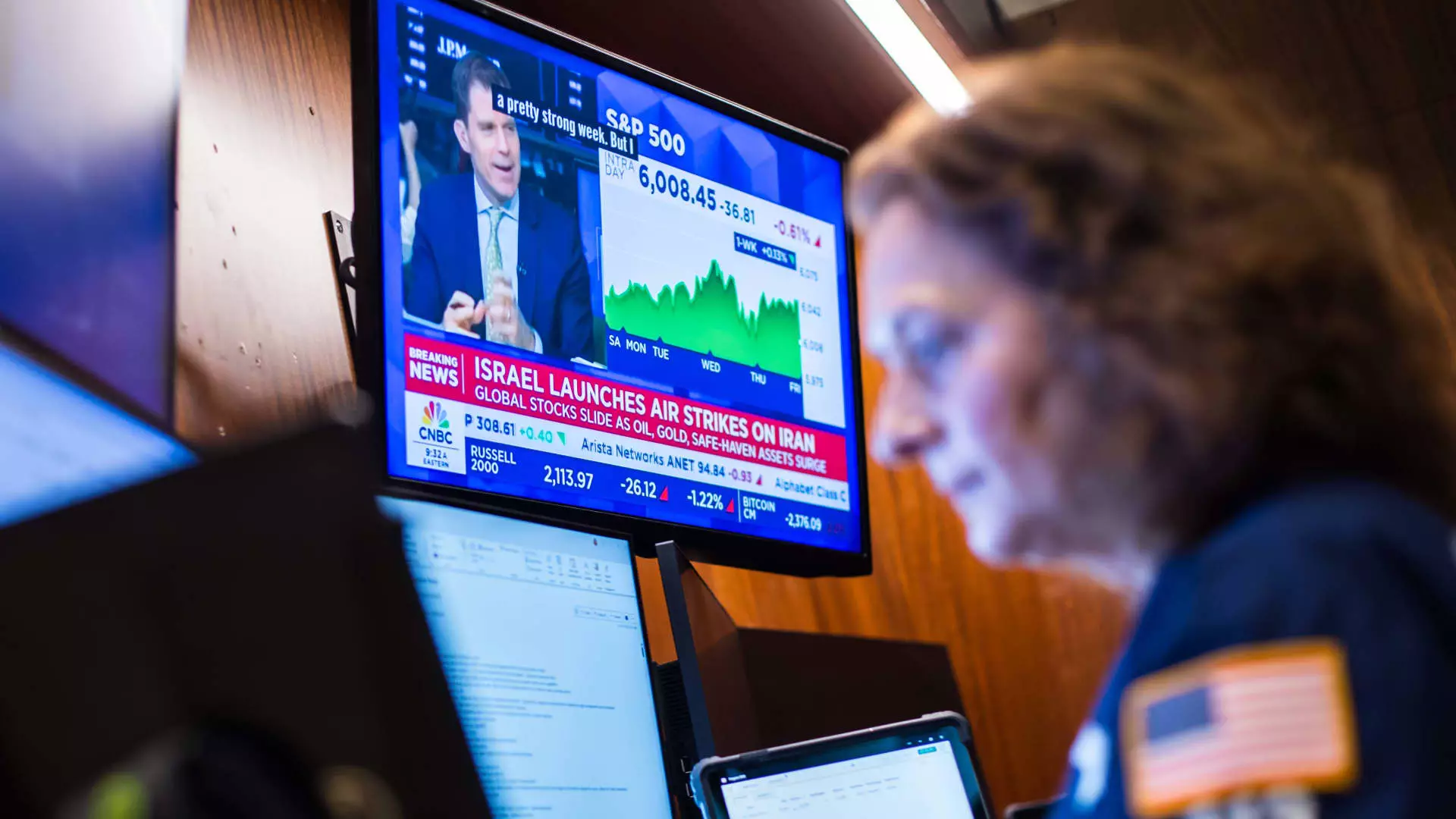Last week began with a promising calmness in the financial markets, only to get disrupted by Israel’s audacious strike against Iranian nuclear infrastructure. This move sent shockwaves across global markets, igniting a firestorm of investor anxiety. U.S. stocks experienced a significant sell-off, with the S&P 500 dropping 1.13% and the Nasdaq Composite falling 1.3% on Friday alone. The once-smooth trajectory for investors abruptly shifted as geopolitical tensions escalated overnight. Prior to this turmoil, market indices were poised for gains, only to reverse course following this volatile development.
The consequences were immediate; crude oil prices surged by approximately 7% for both Brent and West Texas Intermediate as the prospect of further conflict loomed. Meanwhile, gold, long revered as a safe haven during times of uncertainty, reached its highest price in two months. As investors moved to protect themselves from this unexpected volatility, it appears that the flight to safety became the dominant theme of the week. However, it’s worth noting that even the U.S. dollar faced headwinds, reflecting a complex interplay of investor sentiment in light of these geopolitical events.
In the same breath, there was a flicker of optimism on the international relations front, as U.S. and Chinese officials announced a trade-deal framework focused on rare-earth minerals. While this is a step towards reducing tensions, the overarching instability stemming from conflicts like the one in Iran complicates any positive sentiments in the laborious process of geopolitical negotiations.
Encouraging Economic Indicators
In stark contrast to the disquieting geopolitical developments, the economic data released this week offered a breath of fresh air. The consumer price index, which tracks the cost of goods and services, showed that inflation rose at a slower pace than expected, offering a glimmer of hope for Americans grappling with rising living costs. Additionally, the producer price index echoed this sentiment, registering a decline that surpassed economists’ predictions. Such data suggests that while inflation remains a concern, it may be easing, which is crucial for long-term economic stability.
Despite the growth in claims for unemployment benefits leading some analysts to speculate about a weak labor market, the numbers still reflect a resilient economy. Jobless claims remained consistent, with continuing claims hitting multiyear highs, underscoring the complexities and contradictions inherent in the current economic landscape. Amidst fluctuating job markets, consumer purchasing power appears to be maintaining, fueled by the reduction in inflation rates. This nuanced development provides a context in which consumers can continue to engage in spending, potentially buoying businesses in these uncertain times.
The AI Arms Race: A Double-Edged Sword
Perhaps the most fascinating yet perplexing development over the past week has been the race to dominate the generative artificial intelligence space. Companies are pouring resources into AI innovation, and the juxtaposition of disappointment and excitement further complicates investor sentiment. Apple’s annual developer conference left many investors feeling deflated due to a dearth of new information regarding AI advancements. Expectations had been tempered, yet many were still hoping for a glimpse into the tech giant’s future projects—only to be met with silence.
Contrastingly, Meta Platforms captured the market’s attention by announcing a sizable investment in Scale AI, signaling an aggressive pivot towards developing a “superintelligence” division. While investors cheered this strategic move, the broader implications of such rapid advances in AI remain uncertain. As tech companies position themselves for the next wave of innovation, the stakes are high, and the potential consequences—both beneficial and detrimental—are hard to predict.
Nvidia’s performance also reiterates the dynamic landscape of compute demand. CEO Jensen Huang’s emphasis on the need for expanded compute capacity reveals a growing recognition of the significant challenges in scaling these technologies. With Europe projected to expand its compute capabilities tenfold in the coming years, the race for dominance in AI is marked by urgency and competition.
Companies like Oracle and Advanced Micro Devices (AMD) further added to the drama. Oracle’s impressive financial results and BMO’s upgrade to a “buy” rating showcase the optimism that still exists for those at the forefront of AI developments. AMD’s unveiling of their AI chip set to roll out in 2026 also highlights a competitive landscape rife with opportunity, even if such innovations are still years away from tangible impact.
As the financial markets oscillate under combined strains of geopolitical turbulence, economic indicators showing promise, and a tech race that captivates, it’s clear that uncertainty reigns. The quest for stability amidst chaos remains a central theme as investors navigate these turbulent waters. The interplay between safety, opportunity, and the unpredictability of global affairs creates a complex framework for decision-making in today’s financial sphere.

